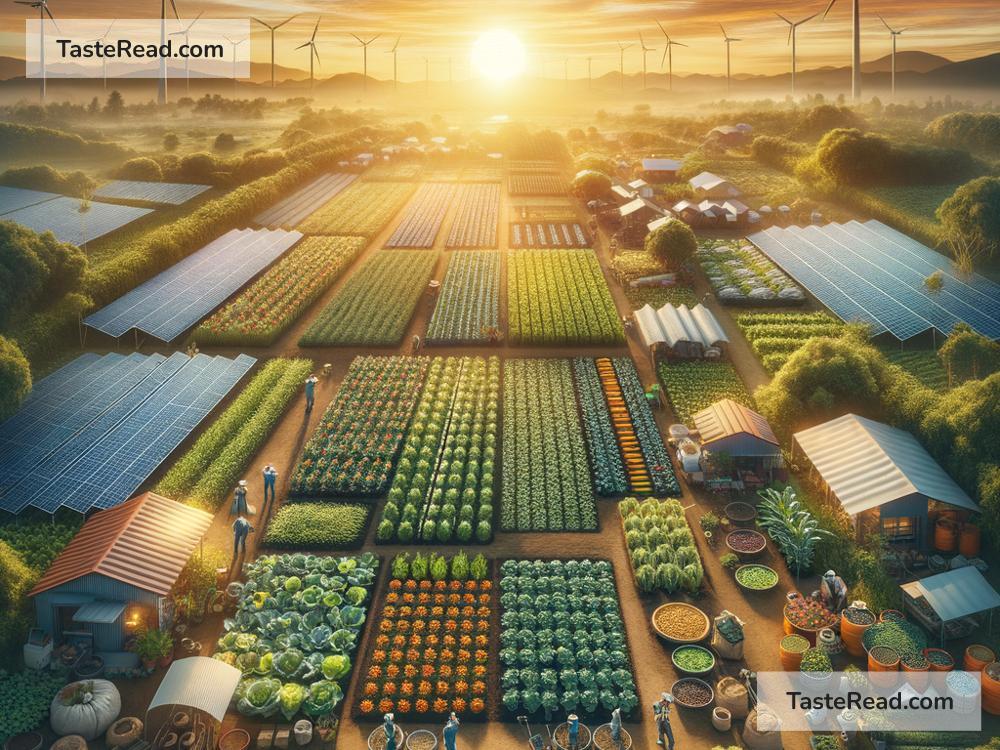Sustainable Agriculture: Growing Food for the Future
As the world’s population grows, we are facing big challenges in feeding everyone. By 2050, there will be over 9 billion people on Earth. To make sure there is enough food for everyone, we need to think about farming differently. This is where sustainable agriculture comes in. It’s a way to grow food that is good for people, the planet, and future generations. Simply put, sustainable agriculture is farming smarter, not harder – and it’s essential for the future of food production.
What Is Sustainable Agriculture?
Sustainable agriculture is the practice of farming in a way that protects the environment, uses resources wisely, and supports farmers and their communities. It focuses on long-term solutions rather than short-term results. Traditional farming methods, like using too many chemicals or cutting down forests to make farmland, can harm the planet and make it harder to grow food in the future. Sustainable practices aim to improve farming without putting the Earth at risk.
Why Does It Matter?
Farming uses a lot of the planet’s natural resources, like soil and water. But these resources are not unlimited. For example, unhealthy soil can’t grow food, and polluted water harms both people and wildlife. Climate change is also making farming harder, with unpredictable weather, droughts, floods, and rising temperatures.
If we don’t change how we grow food, future generations won’t have enough to eat. That’s why sustainable agriculture is so important – it’s about finding a balance. We need to make sure there’s enough food for everyone today and tomorrow, while keeping the planet healthy.
Sustainable Farming Practices
There are many ways farmers can grow food sustainably. Below are some of the most promising practices:
1. Crop Rotation
Crop rotation means planting different crops in the same field over different seasons. For example, a farmer might grow corn one year, then beans the next. This helps the soil stay healthy because different crops use and add nutrients differently. Rotating crops also reduces pests and diseases, which lowers the need for harmful pesticides.
2. Cover Crops
Cover crops are plants, like clover or rye, that farmers grow to protect the soil between main crops. These plants prevent erosion (when soil washes away) and keep the soil rich by adding nutrients. Cover crops are especially helpful during the winter when fields are usually bare.
3. Composting and Organic Matter
Farmers can use compost, made from food scraps and plant waste, to enrich the soil naturally. Adding organic matter helps soil hold water better and grow healthier crops. This reduces the need for chemical fertilizers, which can harm the environment.
4. Precision Farming
Technology is helping farmers be more efficient with their resources. Precision farming uses tools like GPS and sensors to track soil conditions, water needs, and crop growth. This allows farmers to use only the exact amount of water, fertilizer, or pesticide needed, reducing waste and environmental damage.
5. Drip Irrigation
Water is a precious resource, especially in dry areas. Drip irrigation is a system where water is delivered directly to plants’ roots through small pipes. This reduces water waste because it targets only the plants that need it, rather than soaking an entire field.
6. Agroforestry
Agroforestry combines farming with planting trees and shrubs. Trees provide shade, act as windbreaks, and prevent soil erosion. They also improve biodiversity, providing homes for animals and insects that contribute to farming. For example, bees in agroforestry systems help pollinate crops, which leads to healthier harvests.
7. Reducing Chemical Use
Chemicals like pesticides and herbicides can harm the environment and wildlife. Farmers can choose alternatives, like natural pest control or planting crops that repel harmful insects. By using fewer chemicals, farming becomes safer for both people and the planet.
Supporting Local and Sustainable Farmers
Consumers play an important role in supporting sustainable agriculture. By buying food from local farmers who use sustainable practices, you can help create a demand for eco-friendly farming. Local food is also fresher and uses less fuel for transportation, which reduces pollution.
Reading food labels can also help. Look for certifications like “organic” or “fair trade,” which often indicate that farmers are using sustainable methods.
The Future of Farming
Farming is changing. Scientists, governments, and farmers are working together to find new ways to grow food sustainably. Vertical farming, for example, is a method of growing crops indoors in tall buildings using little soil and water. Lab-grown meat is another innovation that could reduce the environmental impact of raising livestock.
Education is also key. Farmers are learning more about sustainable techniques so they can protect the land and feed communities. Governments can support this by offering incentives for using sustainable methods and funding research into eco-friendly technologies.
Conclusion
Sustainable agriculture is the cornerstone of future food production. It’s about farming in a way that respects the Earth while ensuring that there’s enough food for everyone. Practices like crop rotation, composting, and drip irrigation show us that we can grow food while protecting the environment.
We all have a part to play in promoting sustainable agriculture – from farmers to shoppers. By supporting local farmers and choosing foods grown sustainably, we can work toward a future where everyone has healthy food without harming the planet. Let’s take care of the Earth so it can take care of us, now and for years to come. After all, farming isn’t just about today’s harvest – it’s about growing a better tomorrow.


